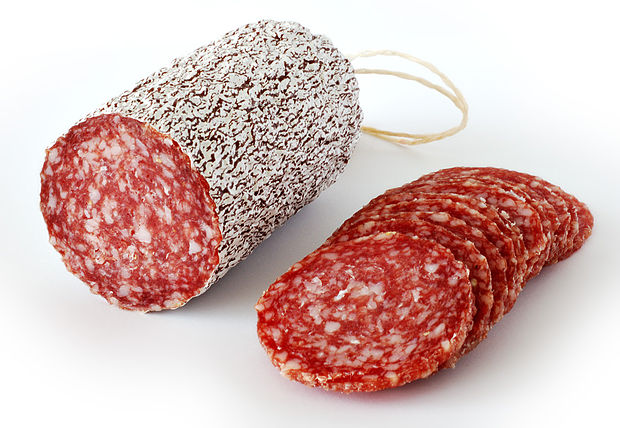Romanian cuisine is the culmination of all the influences around the region. Traditional Balkan cuisine combines with Turkish, Austro-Hungarian and Moldovan/Ukrainian. These, as well as more ancient influences from when Romania was part of the Roman empire. In fact, Romanian is the only language in the region that is based on Latin. So if you speak Italian or Spanish you may find yourself being able to read and understand some Romanian too.
So, in Romania, often you’ll find dishes that are similar to those available in neighboring countries. Who invented each dish? Some have easier histories, some go back so far it’s hard to know who invented them. Either way, all of the below dishes have become typical Romanian food, even if not all of them can claim to be 100% original Romanian.
Plus, Romania as a country was formed from the states of Moldovia and Wallachia in 1859, and only at the end of World War I did the states of Transylvania, Banat, Bukovina, and Bessarabia also become part of Romania. So today, Romanian traditional food is really a combination of the cuisines of each region, rather than always having been “Romanian”. More recently, Moldova became an independent country, though has left behind some of its cuisine.
Because most of Romania is still incredibly, breathtakingly, beautifully rural, and people largely live off the land, food follows the seasons. In the summer and early autumn, salads abound, and there’s a wealth of fresh fruit and vegetables, while in the winter and early spring, preserved foods make their presence felt. I bet there’s not a rural family who doesn’t make their own zacuscă, mixed pickles, jams, cheese, and cured meats.
Plus wine. liqueurs, and țuică, of course!
Below link will take you to my Blog where you will find my TOP 10 Favorite Romanian Dishes everyone should try at least once in their life time.
10 Mouth-Watering Romanian Dishes that everyone should try Romania's Most Popular Dishes - Top 10
Traditional Romanian Food: Starters, Soups & Salads
Some traditional Romanian dishes to get your stomach ready for the main feast.
Zacuscă – Vegetable Dip
Vegetable spreads are popular all over the Balkans. Zacuscă is the Romanian version of what may have originally been a Bulgarian dish but tastes distinctly different from other versions we’ve tried elsewhere. Red peppers and eggplant should be roasted on a BBQ. The charred skins removed, and then blended with other vegetables, like carrots, perhaps mushrooms. There are many varieties and a lot of restaurants make their own from scratch.
This is a very popular Romanian food you can find almost everywhere, from supermarket shelve to corner stores, to 5 star restaurants. The best version we tried was homemade by my mother in law using all organic home grown vegetables in their backyard.
Salată de icre – Fish Roe Dip
Fish roe – typically from pike or carp – is blended with oil and lemon juice to make this traditional Romanian food. Zesty, fresh and creamy while not being too fishy. Great with some fresh bread!
Salată de Vinete – Smokey Eggplant Salad Dip
Another typical Romanian food is Salată de Vinete. Eggplants are thrown straight on hot coals to infuse them with natural smokiness. Then blended with oil and perhaps lemon juice. When done right, there should be no bitterness, only a mix of freshness and smokiness.
Jumări – Pork Rinds – Greaves with Onions
Pork rinds that still have some soft fat, as well as very crispy bits. The onion balances the fat.
Caşcaval Pane – Deep Fried, Breaded Yellow Cheese
Another dish popular through the Balkans – and the world really – is deep fried cheese. In Romania and Bulgaria, it is made with the local Caşcaval – a mild yellow cheese.
Placinta Dobrogeana cu Branza (sarata) & Plăcintă cu brânză – Cheese Pastries
Pies date back to Roman times and possibly before. Every part of the Balkans makes there own style of cheese pie. And Romania has quite a few varieties. Dobrogea is a region in SE Romania, near the Danube river and near the city of Constanta. So “Dobrogeana cu brânză” is the cheese pastry of that region and is very flat with a layer of cheese down the middle.
Whereas Plăcintă cu brânză, simply translates as “pie with cheese” and refers to the more generic version that bears resemblance to the multi-layered pastry called “boerek” found throughout the Balkans. Look out for bakeries all around the country.
Salam – Romanian Sausage (Salamis)
Romania has a huge variety of salamis, often named after the city where they were invented. But, one of the most famous is the Salam Sibiu, invented by an Italian immigrant, who actually set up shop in Sinaia. The reason the sausage was named Sibiu sausage was because it was exported to Hungary and stamped by the customs department of Sibiu. Salam Sibiu is regarded as one of the highest quality pork salamis in Romania.
Ciorbă de fasole cu afumătură – Bean Soup With Smoked Ham Hock
Smoked ham is an ingredient that is used to flavor many Romanian dishes. Smokey, meaty goodness! Mixing with beans makes for a hearty winter soup.This bean soup it’s a romanian staple and I remember eating it since ever. There’s a saying in Maramures, if you eat many beans during your childhood, you become a big and strong man.
In romania we call it “Ciorba de fasole boabe cu ciolan afumat”. The word “ciorba” is improperly translated soup but there is no other English word to describe it. “Ciorba” is actually a slightly sour soup composed by vegetables and sometimes meat. To understand how important “ciorba” is in Romania you must think at the cheese for the french or the tea for the English.
Ciorbă de perişoare – Meatball Soup
Speaking of hearty soups, look at all that butter! Romanian meatball soup is likely a product of Turkish cuisine but Balkan cooking and cold winter weather seem to have fattened this dish up for the local market.
Ciorbă de perișoare is a Romanian traditional sour soup with meatballs. Perișoare are meatballs usually made with minced pork meat, mixed with rice and spices and boiled in a ciorbă - soup with vegetables such as onions, parsnips and celery among others and sour liquid or powder and garnished with parsley.
Fasole batută – White Bean Dip
Fasole bătută is a creamy Transylvanian vegan white bean purée, topped with a pile of sticky, gooey, sweet caramelized onions. It’s traditionally served with sausages and pickles, plus home-made bread (pâine de casă), of course. It makes for a fantastically filling and simple frugal meal, especially when there’s not much in the way of fresh produce around.
As a lifelong fan of hummus, when I first came across fasole bătută, it was love at first sight! This meal of white bean purée with fried onions, sausages, and pickles (fasole bătută cu ceapa prăjită, cârnați și muraturi) seems to me, the epitome of Transylvanian families making sure they have enough to eat during the lean months, with the recipe passed down from mother to daughter for generations.
In my next Blog Post i will write about Traditional Romania Food : Grilled Meats & Fish Dishes.













Comments
Post a Comment